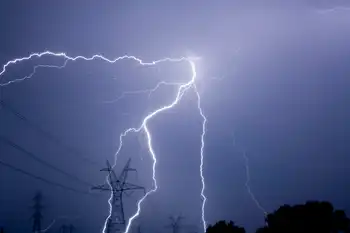With a Focus on Local Response, PG&E Prepares for Winter Storm Season

NFPA 70e Training
Our customized live online or in‑person group training can be delivered to your staff at your location.

- Live Online
- 6 hours Instructor-led
- Group Training Available
PG&E Storm Outage Response deploys localized forecasts, mobile generators, and microsite base camps to restore power fast, leveraging SmartMeters, self-healing grid automation, and regional control centers across Northern and Central California.
Key Points
PG&E Storm Outage Response uses localized forecasts, mobile generators, and grid automation to restore power quickly.
✅ Advanced forecasts pinpoint high-impact zones
✅ Mobile generators enable rapid neighborhood restoration
✅ Microsites and control centers coordinate local crews
Fall is here and winter is just around the corner, and PG&E has been busily planning to respond to storm season and possible electric outages, including wildfire-risk safety shutoffs across its 70,000-square-mile service area in Northern and Central California.
And even as new tools and technologies have improved the energy company’s customer restoration capabilities system-wide, the ability to localize outage response has sharpened, too. Those capabilities include weather forecasts that pinpoint where storm damage will be most severe; mobile generators that allow rapid restoration to individual neighborhoods, including after safety shutoffs in some areas; and small base camps, or microsites, to coordinate restoration response closer to storm damage.
“Over the last few years, we’ve been able to strengthen our ability to get in front of weather events, wherever they happen in our service area. We follow industry best practices to develop local restoration models and quickly assemble multiple base camps as they’re needed,” said Pat Hogan, PG&E senior vice president of Electric Transmission & Distribution
Storm season arrived early in parts of the service area, with two notable weather makers along the North Coast in October. Eureka saw its wettest October since 1950, and the second-wettest since recordkeeping began in 1896, said Mike Voss, PG&E principal meteorologist.
A rainy start to the season doesn’t necessarily herald above-average winter storm activity.
“Larger storms can happen anytime, independent of El Niño or La Niña. We always have to be prepared for winter storms. With multiple local forecasts each day, our storm outage prediction model helps us know in advance where we will need to deploy resources to restore power,” Voss said.
Nor is weather uniform across the area, and electricity inequities in California can shape local impacts as well. Last year, the northern part of PG&E’s service area saw higher-than-usual snowpack, while the Central Valley and the southern Sierras experienced average to below-average precipitation.
Those variations show the importance of localized storm preparation and response, as seen in BC Hydro storm response during atypical events. Measures include:
- Advanced Weather Forecasting
- Localized Resource Planning
- Upgraded Telecommunications
- Scalable Base Camp
- Portable Power Generation
Those initiatives add to PG&E tools including SmartMeters that quickly pinpoint outage locations and cut response times; advanced technology that “self-heals” the grid by rerouting power and restoring service to customers in minutes; and state-of-the-art distribution control centers in Fresno, Concord and Rocklin to manage PG&E’s 140,000 circuit miles of distribution lines.






